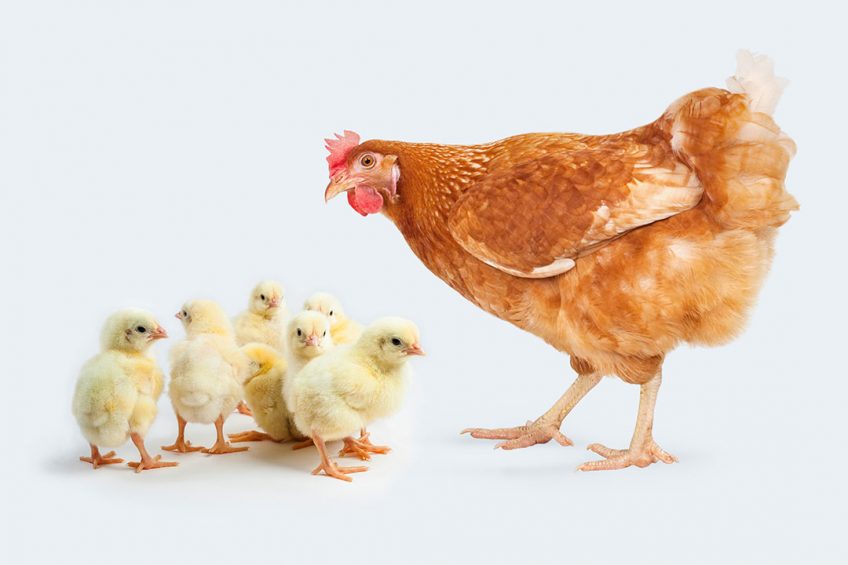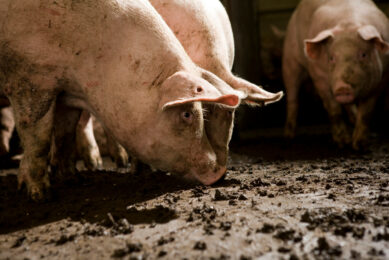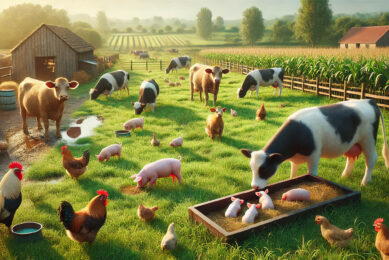Competitive exclusion is increasing in popularity

Competitive Exclusion (CE) is rapidly becoming more popular as a method to improve health and performance in poultry production. The development of antimicrobial resistance and an improved understanding of the importance of balanced intestinal microbiota for health, are some of the key drivers of the current trend.
The gastrointestinal tract acts as a borderline between the internal organs and the surrounding outer world. About 70% of the cells of the immune system are in the GI tract. In addition, nutrients necessary for the growth of the chicks are absorbed in the intestine. Consequently, the GI tract is of major importance for both the health and the performance of poultry.
The intestinal lumen contains the most complex microbiological ecosystem present in the world, with up to 1012 cells/gram of intestinal content. The complex intestinal microbiota of poultry can be considered the result of at least tens of millions of years of evolutionary selection.
Thus, the microbiota of the intestine has impressive genetic potential to synthetise a wide selection of substances that are, in various situations, beneficial for the survival of the birds until they reach the reproductive age.
In other words, the complex microbiota present in the intestine of a healthy bird is there for a reason. A normal intestinal microbiota is beneficial for the health and nutritional status of the bird.
CE: Natural defence mechanism
The presence of normal bacterial microbiota in the intestine makes it more difficult for pathogenic bacteria to enter the animal through the GI tract as there is competition for living space, epithelial attachment sites and available nutrients.
Further, many intestinal microbes are capable of producing antibacterial substances, and the intestinal microbiota is also thought to play a role in the normal development of intestinal immunity. This mechanism, where a healthy intestinal microbiota facilitates the health of the host, is called Competitive Exclusion (CE).
While vaccines may offer effective protection against the bacterial strains they are intended for, a healthy complex intestinal microbiota can reasonably be expected to be beneficial for the health of the bird in a wider perspective, as the whole concept of CE has a more universal nature.
Today, CE products for poultry are most frequently used to establish a natural-like microbiota in the intestine of day-old chicks.
Key role of balanced intestinal microbiota
In natural conditions, the mother hen acts as the source of the intestinal microbiota of a day-old chick. In modern hatchery conditions this link is missing. As young chicks are particularly sensitive to bacterial pathogens, such as Salmonella spp, the lack of a solid, healthy intestinal microbiota contributes to the susceptibility of young chicks to several pathogenic bacteria and intestinal disturbances.
In past decades, various anti-infective products were quite commonly used in intensive poultry production, both to facilitate growth and to avoid problems with bacterial pathogens. However, it is reasonable to assume that many of the anti-infectives used also had a negative impact on the natural intestinal and possibly even environmental microbiota of the poultry flocks. The role of a healthy intestinal microbiota in the health of the host animal has now been studied more extensively and the problems associated with antimicrobial resistance have also gained more attention.
Consumers in many major markets are increasingly aware of the quality aspects of poultry production, not least when it comes to microbiological quality, the use of anti-infectives, and animal welfare.
Global trend towards the regular use of CE
Although the concept of CE has been utilised for decades in some markets, in particular to control Salmonella spp., the concept of CE has only recently been applied on a global scale, in order to limit the need for anti-infective treatments and meet the expectations of quality conscious customers.
A common practical application of the CE concept in poultry is the hatchery treatment of newly hatched chickens with bacterial preparations originating from healthy adult birds.
The concept of CE was originally developed to control Salmonella in chickens, but it has been later expanded to involve other pathogenic bacteria, like pathogenic E. coli, C. perfringens, Listeria and Campylobacter spp.
Currently, there are 2 true CE products for poultry commercially available on the market: Broilact from Orion Pharma, and Aviguard from Lallemand. These products contain a large variety of selected microbes (“non-defined mixed culture”) originating from healthy donor birds, and can thus be used to establish the complex, healthy intestinal microbiota in day-old chicks within hours of treatment.
The use of the CE method in controlling Salmonella spp. and some other pathogens in poultry has been quite widely documented in the published literature over the past few decades. In some markets, such as Finland, CE products have also been quite extensively used in poultry for decades, also in production broilers.
However, wide-scale global interest in the CE method for poultry has increased significantly in recent years, in parallel with raised awareness of the problems associated with antimicrobial resistance.
Over the past few decades, several studies have been published concerning the use of CE in controlling various bacterial pathogens in poultry, such as Salmonella spp. and Campylobacter spp.
One of the most interesting recent studies, was a challenge study* conducted in Curitiba, Brazil, where a single dose of a CE product at day 0 was found to effectively reduce bacterial colonisation of broiler caeca with S. Heidelberg at 28 days of age. S. Heidelberg represents a significant challenge in Brazil, as it has been reported to be frequently multi-drug resistant.
Figure 1 – Competitive exclusion is a natural defence mechanism against bacterial pathogens.

Difference between CE and probiotic products
In addition to the CE products used to establish a normal intestinal microbiota, there are a number of commercial probiotic products for poultry on the market.
In contrast to actual CE products (“non-defined mixed cultures”), probiotic products (“defined cultures”), are not used to establish a complex intestinal microbiota, but to introduce only one or a few strains of microbes into the intestine (Figure 1).
Also, probiotics are often claimed to be beneficial for the health and performance of the birds by having a positive impact on the intestinal microbiota of the birds in one way or other.
Even the term ”Competitive Exclusion” is sometimes used in a fairly confusing way in the marketing of probiotic products containing only one or a few strains of bacteria. Thus, it is always advisable to carefully study the quality of available published literature demonstrating the actual efficacy of the product for the purpose intended.
Comprehensive approach needed
Based on the current literature and the experience of use, Competitive Exclusion clearly represents a highly interesting opportunity to improve health and optimise performance in poultry – without the regular or wide-scale use of anti-infectives.
However, although optimal intestinal microbiota plays a key role both for health and performance, it is obvious that reaching the optimal production efficacy requires a holistic approach, where the farm conditions, feed quality, management routines, and so forth are optimised and systematically monitored also.
*Study report in process of publication
Author:
Dvm Pekka Rantajärvi, Real Rainmakers






